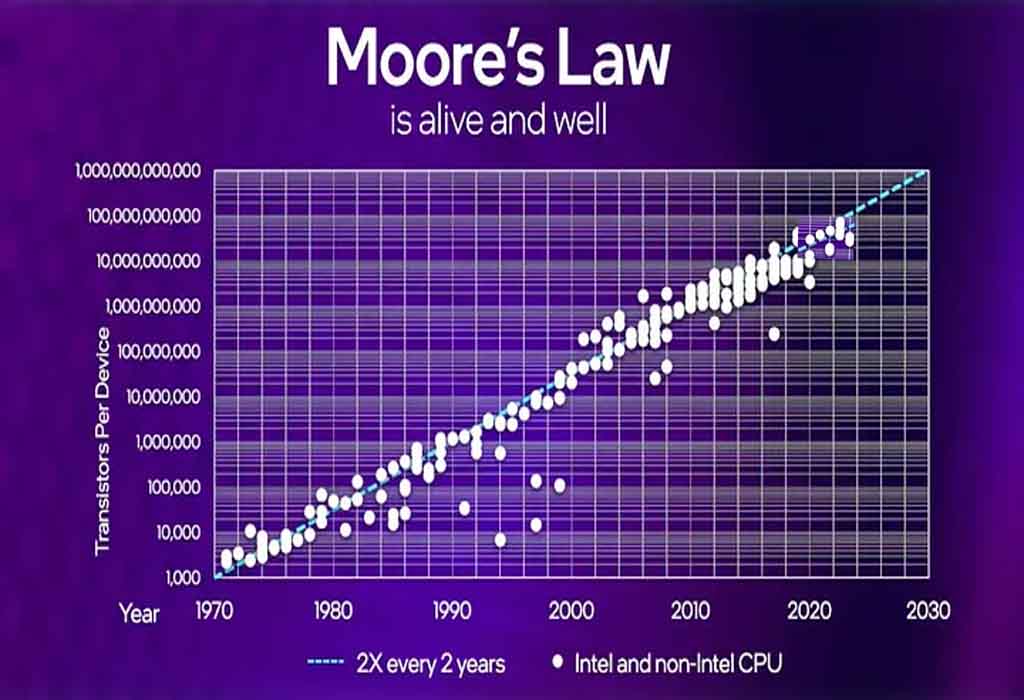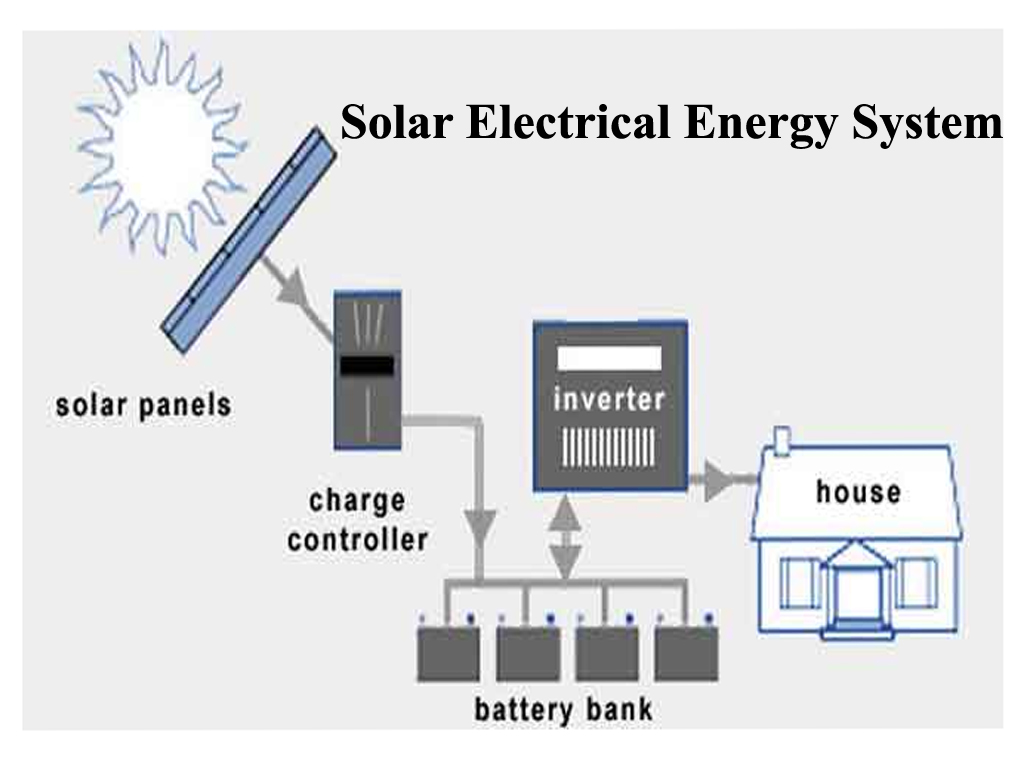Why Is Moore’s Law Significant in Technology?
Moore’s Law is a foundational concept in the semiconductor industry that has driven the exponential growth of computing power for decades. That is a fascinating and foundational topic in the history of technology! Moore’s Law is much more than just a technical observation; it has profoundly shaped the modern world.
Moore’s Law Definition:
Moore’s Law is an observation and projection that the number of transistors in a dense integrated circuit (microchip) doubles approximately every two years, with a minimal increase in cost.
- Origin: It was first described in a 1965 article by Gordon Moore (co-founder of Intel) while he was working at Fairchild Semiconductor. He initially predicted a doubling every year for the next ten years, but in 1975, he revised the projection to a doubling every two years.
- Nature: It is an empirical relationship and an industrial goal, not a law of physics. It became a self-fulfilling prophecy, setting an aggressive target for the semiconductor industry to strive for and deliver.
- Implication: This consistent doubling of transistor density means that computing devices continuously become faster, smaller, more energy-efficient, and cheaper to manufacture over time.
The most commonly cited definition of Moore’s Law is:
- The number of transistors on a dense integrated circuit (IC) doubles approximately every two years.

Details about Moore’s Law and its Evolution
- The “Law” Name: The term “Moore’s Law” was actually coined by Carver Mead, a professor at Caltech, around 1975, and not by Moore himself.
- Dennard Scaling: A related principle, which stated that as transistors shrink, their power consumption also drops, keeping the overall power density constant. This was crucial for the initial decades of Moore’s Law.
- Physical and Economic Limits: In recent years, the pace of the original observation has begun to slow as engineers encounter fundamental physical limits (like “quantum tunneling” when transistors approach atomic scale) and the exorbitant cost of research and manufacturing for each new, smaller process node.
- Extending the Trend: The industry is now exploring different ways to continue the performance-per-dollar improvement, often referred to as “More than Moore.” This involves innovations like:
- Advanced Packaging: Stacking chiplets (smaller dies) in 3D to increase density instead of just shrinking transistors on a single plane.
- New Materials: Exploring alternatives to silicon.
- New Architectures: Developing specialized processors (like GPUs and AI accelerators) and exploring entirely new computing paradigms (like quantum computing) to improve efficiency.
Moore’s Law Historical Impact:
The historical impact of Moore’s Law is practically synonymous with the digital revolution itself. It provided a roadmap that catalyzed investment, competition, and innovation across the entire technology sector.
1. The Digital Revolution and Exponential Growth
Moore’s Law set an exponential pace for the semiconductor industry, creating a predictable rhythm for advancement. This relentless improvement has allowed computing power to become vastly cheaper, smaller, and more accessible. To illustrate the magnitude, the first integrated circuits had only a handful of components; modern microprocessors now contain tens of billions of transistors.
2. Democratization of Computing
The exponential increase in power coupled with the relative decrease in cost has been the key driver in making computing universally accessible.
- From Room-Sized to Pocket-Sized: It allowed computers to shrink from massive, expensive, room-sized mainframes to personal computers, laptops, and ultimately, to the ubiquitous smartphones and wearables we use today.
- Widespread Adoption: Cheaper, more powerful chips led to the explosive growth of the consumer electronics market, putting unprecedented processing power into the hands of billions globally.
3. Economic Engine
Moore’s Law became the “golden rule” for the technology industry, acting as a competitive benchmark and strategic imperative. Companies like Intel, Samsung, and TSMC have had to invest billions in R&D and manufacturing capabilities to keep pace, driving massive economic activity and creating entire new industries (e.g., software, the internet, e-commerce, and social media).
4. Foundation for Modern Technologies
Nearly every advanced technology we rely on today is a direct or indirect consequence of the relentless march of Moore’s Law:
- The Internet and Cloud Computing: The ability to build massive, powerful, and affordable data centers is predicated on the falling cost and rising power of microprocessors.
- Artificial Intelligence (AI): The sophisticated algorithms and massive datasets of modern AI, particularly deep learning, rely entirely on the availability of vast, inexpensive computational resources (including specialized chips like GPUs).
- Advanced Healthcare and Diagnostics: From medical imaging to gene sequencing, faster, cheaper computing has revolutionized research and clinical practice.
Technological Contributions:
The continuation of Moore’s Law has demanded continuous, groundbreaking technological innovation in manufacturing, materials science, and chip design.
1. Miniaturization Techniques (Scaling)
The core challenge has always been to make transistors smaller, a process known as scaling. Key breakthroughs include:
- Photolithography: The process of using light to etch circuit patterns onto silicon wafers. Advancements like Extreme Ultraviolet (EUV) lithography have allowed for the printing of features smaller than the wavelength of light itself, pushing the physical limits of precision.
- High-k Dielectrics and Metal Gates: Replacing traditional materials with new ones to reduce electrical leakage and improve performance as transistors shrink to near-atomic dimensions.
- FinFET Transistors: The invention of the FinFET (Fin Field-Effect Transistor) structure was a critical breakthrough where the transistor gate wraps around the channel in a 3D structure, allowing better control over current and further miniaturization when 2D scaling was nearing its limit.
2. Architecture and Design
The industry has also innovated beyond just scaling to maintain performance gains:
- Multi-Core Processors: When it became physically challenging to increase the clock speed of a single processor, chip manufacturers started placing multiple processor “cores” on a single chip, increasing overall throughput and continuing the performance trajectory.
- Advanced Packaging and Heterogeneous Integration: As the classic definition of Moore’s Law slows down due to fundamental physical limits (reaching atomic scales), the industry is moving to 3D stacking (vertical integration) and advanced packaging techniques like chiplets. This allows for the integration of different types of specialized chips (e.g., CPU, memory, specialized accelerators) into a single, highly powerful package, continuing the trend of increasing density and performance at the system level—a concept sometimes called “More than Moore.”
The Future and Challenges:
While the pace of classical transistor scaling has undeniably slowed due to quantum effects and escalating manufacturing costs, the spirit of Moore’s Law—the relentless drive for exponential improvement in computing power and efficiency—persists through these architectural and packaging innovations. The technological imperative it created continues to push research into entirely new computing paradigms, such as quantum computing and new materials like graphene, ensuring that the digital age will continue to evolve at a breakneck pace.
Is Moore’s Law Still True?
Moore’s Law, in its traditional and strictest sense, is slowing down and arguably ending, but the spirit of technological advancement it represents is still very much alive through new innovations.
Moore’s Law is the observation, made by Intel co-founder Gordon Moore, that the number of transistors on a microchip doubles approximately every two years, with minimal cost increase, leading to an exponential increase in computing power.
Why the Traditional Law is faltering:
The original driver of Moore’s Law the ability to simply shrink the size of the basic silicon transistor is running into fundamental roadblocks:
- Physical Limits: Transistors are approaching the size of atoms (we are already seeing chips with features as small as 2-nanometers). At this scale, quantum effects, like electron tunneling and increased leakage current, become significant, causing heat and power issues.
- Economic Limits: The cost of developing and manufacturing a new, smaller process node has skyrocketed. Moving to the next generation (like using Extreme Ultraviolet or EUV lithography) requires incredibly expensive and complex equipment, meaning “smaller” no longer automatically means “cheaper” for producers.
- Slowing Pace: The industry has experienced delays between new process nodes. The rate of doubling has stretched out, falling short of the two-year prediction in many instances.
How Progress Continues (Beyond Moore’s Law)
The drive for increased computing power hasn’t stopped; it’s just shifted from purely scaling down transistors to a more diverse, “More Than Moore” approach:
| Innovation Strategy | Description |
| 3D Integration/Chiplets | Stacking multiple layers of transistors vertically, or integrating specialized, interconnected smaller chips (chiplets) on a single package. This increases density and performance without relying solely on horizontal shrinking. |
| New Transistor Architectures | Developing fundamentally different transistor designs, such as Gate-All-Around (GAA) or FinFETs, which provide better electrical control at tiny dimensions to mitigate quantum effects. |
| New Materials | Exploring materials beyond traditional silicon, such as carbon nanotubes or graphene, which have superior electrical properties for future transistors. |
| Specialized Hardware | Designing chips specifically for a certain task, such as GPUs for parallel processing and AI/ML computations (AI accelerators). This achieves massive performance gains for specific applications even if general-purpose CPU scaling slows. |
| Software and Architecture | Focusing on better software, more efficient algorithms, and improved hardware-software co-design to get more performance out of existing hardware. |
Moore’s Second Law:
Moore’s Second Law, also known as Rock’s Law, is the observation that the capital cost of a semiconductor chip fabrication plant (or “fab”) doubles approximately every four years.
It is the economic counterpoint to the original Moore’s Law, which deals with the exponential growth of computing power.
Key Aspects of Moore’s Second Law
Moore’s Second Law (or Rock’s Law, named after venture capitalist Arthur Rock) focuses on the escalating financial burden of maintaining the pace of innovation predicted by the first law:
- Exponential Cost: It states that the investment required to build a state-of-the-art chip manufacturing facility (a foundry) increases exponentially over time.
- The Driver: This exponential rise in cost is due to the increasing complexity of the manufacturing process (lithography, clean room requirements, etc.) needed to produce smaller, more advanced transistors. For example, moving to modern, cutting-edge nodes requires extremely expensive equipment like Extreme Ultraviolet (EUV) lithography machines.
- The Collision: Moore’s Second Law predicts a collision with the original Moore’s Law. Eventually, the massive and ever-increasing capital expenditure (Capex) required for a new fab may reach a point where the resulting performance gain from the smaller transistors (Moore’s Law) is not economically justifiable.
- Industry Consolidation: This law explains, in part, why the semiconductor manufacturing industry has consolidated. Only a handful of companies globally (like TSMC, Samsung, and Intel) have the financial resources—often exceeding $10 billion for a single new fab—to build and operate these cutting-edge facilities.

